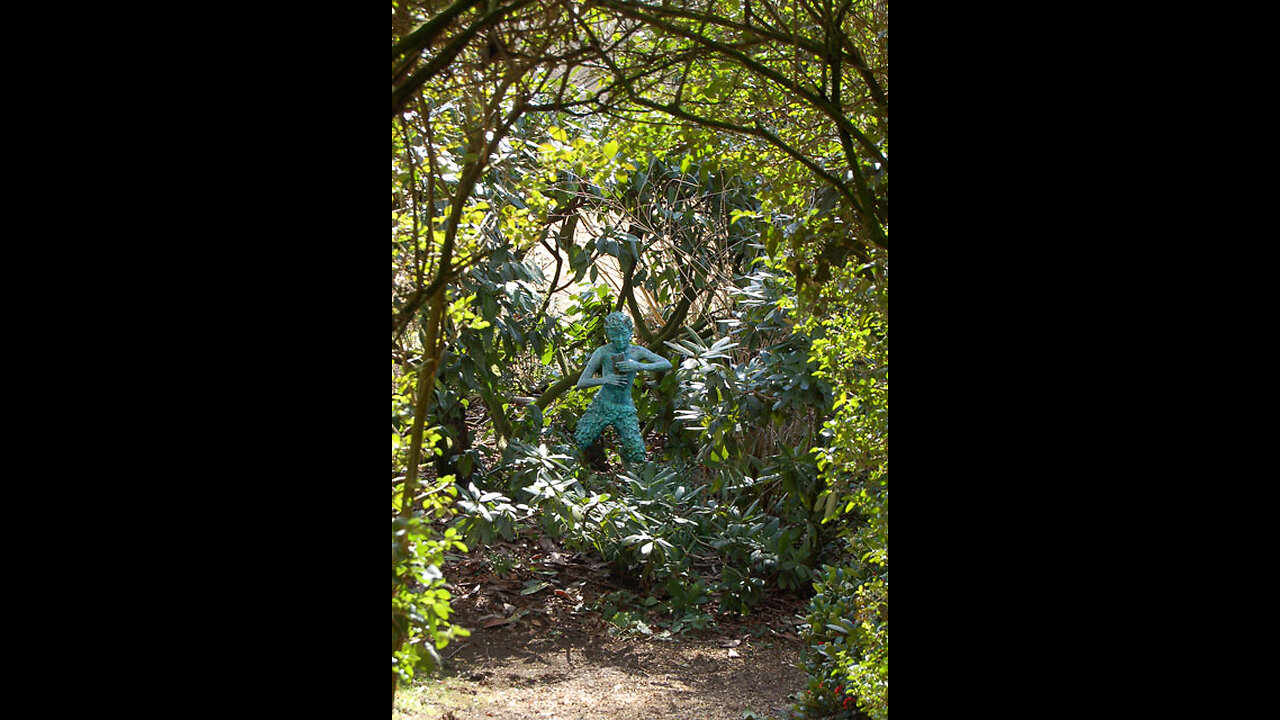Premium Only Content

"The White People", by Arthur Machen
You can support me on Patreon! https://www.patreon.com/sststr
One of Machen's most classic tales, along with "The Great God Pan". Written in the 1890s and first published in 1904. Personally I could do without the framing provided in the Prologue or Epilogue - The Green Book is quite excellent all on its own!
----
0:00:00 Prologue
0:20:55 The Green Book
1:35:08 Epilogue
----
From the annotations:
ecstasy: a key Machen term; his theory of literature, for instance, as articulated in his book "Hieroglyphics", is centered upon the concept
forsake the imperfect copies and go to the perfect originals: a quintessentially Platonic formulation
Romanée-Conti: a highly esteemed vineyard in Burgundy
four ale: cheap ale, originally sold at fourpence a quart
qua: 'as being'; in other words, insofar as the killer merely kills, he does not qualify as a 'sinner' in Ambrose's spiritual sense, since a soulless animal may do as much
Highland caterans of the 17th century ... moss-troopers: both terms refer to gangs of Scots marauders
Gilles de Raiz: the Baron de Retz, Rais or Raiz (1404-40) fought the English alongside Joan of Arc during the Hundred Years War and was made marshal of France, but achieved historical immortality for the ritualized torture, rape, and murder of children.
the "Blackwood" review of Keats: both the Quarterly Review and Blackwood's Magazine reviewed Keat's "Endymion" (1818) with great harshness
Hierarchs of Tophet: Tophet or Topheth is a place near Jerusalem associated in the Bible with child sacrifice; in extended uses, hell itself. A 'hierarch' is a high priest
flagrant "Hobson-Jobson": originally a British corruption of the Arabic "Ya Hasan! Ya Husayn!", the phrase can refer, as here, to the linguistic phenomenon ... of superficial linguistic resemblance
De Maupassant's tale: "Qui sait" ("who knows") by Guy de Maupassant, first published in 1890 in the newspaper L'Echo de Paris
the Aklo letters ... or what voolas mean: an incantatory litany of inventions, singled out for mention by Lovecraft, who wrote admiringly in his influential essay on supernatural horror
for ever and for ever, world without end, Amen: the conclusion of the Gloria Patri doxology. As a young man Machen, climbing in Welsh hills, encountered grey limestone rocks, something dread, threatening, Druidical about them ... And so onward, slope rising to a still higher slope and no end or limit that the eye could see ... And I remember - I was only twenty then - feeling that there was an expression for all this in words: "For ever and ever, Amen". It was not till very many years afterwards that I learnt that the Welsh for "and ever shall be" is "ac yn y wastad" - and into the waste, the waste of time being understood.
aumbrey: cupboard
"Troy Town": name given to a number of turf labyrinths throughout Britain
The picture used is of a Statue of Pan in Coton Manor Gardens by Andy F (https://www.geograph.org.uk/profile/32299) used here under the Creative Commons Attribution-ShareAlike 2.0 Generic license (https://creativecommons.org/licenses/by-sa/2.0/).
I know the statue is supposed to be white, but finding pictures of forest statues of a Roman flavor at all is nigh impossible. Gotta go with whatever can be found, and you'll just have to imagine it is white.
To follow along: https://www.gutenberg.org/files/25016/25016-h/25016-h.htm#Page_111
-
 1:09:19
1:09:19
Ami's House
1 day ago $10.04 earnedWhen Defending Israel Backfires: Are We Pushing Our Last Friends Away? With Karys Rhea
145K108 -
 8:13
8:13
WhaddoYouMeme
18 hours agoThis Gets More Tragic By The Second
6263 -
 40:47
40:47
SouthernbelleReacts
2 days agoThe Faculty (1998) | Back-to-School Horror Movie Reaction | Alien Invasion in High School!
6114 -
 6:58
6:58
Adam Does Movies
17 hours ago $0.09 earnedCaught Stealing - Movie Review
598 -
 23:41
23:41
JohnXSantos
14 hours agoI Built a $1M Clothing Line for My Toddler in Just 14 Days
4751 -
 30:00
30:00
Nicholas Bowling
13 hours ago30 Minutes of EXPOSING Religious Hypocrites! (They Literally Run Away)
380 -
 LIVE
LIVE
Joe Donuts Live
3 hours ago🟢 BF2042 Explosive Action: Training for Battlefield 6!
115 watching -
 47:29
47:29
Man in America
20 hours agoIT DOESN'T ADD UP: The Trans Shooter's Story Is FULL of Holes
77.6K103 -
 LIVE
LIVE
FyrBorne
11 hours ago🔴Warzone M&K Sniping: Through the Fyr And Flames (Of SBMM)
156 watching -
 LIVE
LIVE
Dorian_D
1 day ago🔴 Dorian's First-Time Mega Man Legends 2 Playthrough: Full Gameplay Adventure!
63 watching